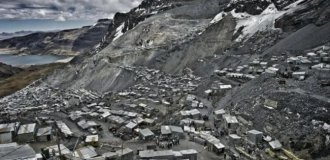Stunning footage from Mongolia (14 photos + 1 video)
Category: Beautiful cities, PEGI 0+
26 September 2024
Mongolian photographer Gan-Ulziy Gonchig has shared amazing photos and videos that show the beauty and diversity of his country. It’s no wonder Lonely Planet named Mongolia the best place to visit in 2024. 
Gan-Ulziy’s photos transport viewers to different parts of Mongolia, from icy mountains to scorching deserts. He claims that his country is like Hawaii, Iceland, Switzerland, Saudi Arabia, and Canada all rolled into one.
His work is truly mesmerizing: turquoise waters, snow-capped valleys and the breathtaking dunes of the Gobi Desert, home to Bactrian camels. The peaks of the Yol Valley also seem otherworldly against the clear sky.
Gan-Ulziy's photographs cover all four corners of the 1,564,116 square kilometer country. One of his shots, taken in Tsengel, Bayan-Olgii, shows the Tsagaan-Gol River, which flows into the Khovd River. The unusual white hue of the former contrasts sharply with the deep blue of the latter.

The Tsagaan-Gol River flowing into the Khovd River
Another photo taken in northern Mongolia, at the confluence of the Eg and Tarvagatai rivers, shows a picturesque landscape immersed in greenery. The winding waterway is surrounded by bright green grass, mountain peaks and trees, with fluffy clouds hovering above.
Of course, this landscape could have been photographed in Canada or Switzerland.
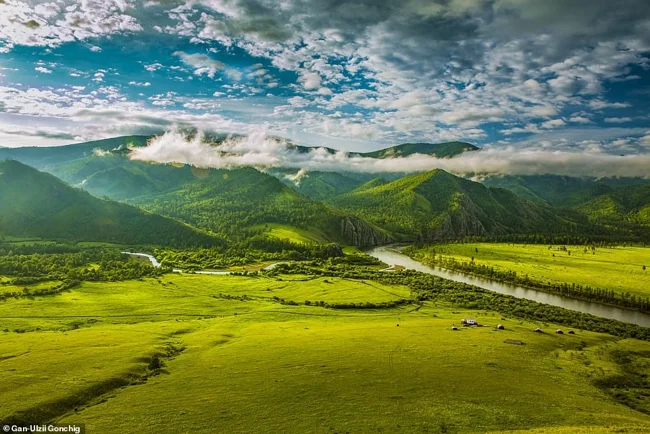
The confluence of the Eg and Tarvagatai rivers
And the picturesque Khovsgol Lake, located in the north and covering an area of 140 kilometers, can be compared to Hawaii. Lush islands are scattered along its shores, and deep blue waters splash against the shore, creating an unforgettable landscape.
This lake, known as the "Blue Pearl of Mongolia", is an untouched corner of nature surrounded by forests and mountains. Its crystal clear water makes up almost 70% of the fresh water in Mongolia. This is the perfect place for those looking for peace and stunning scenery.
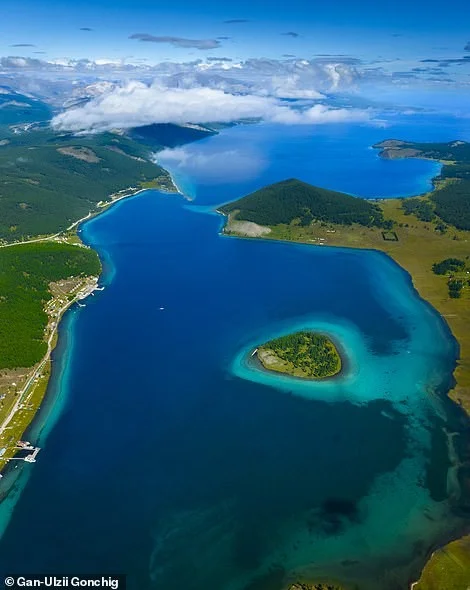
Lake Khovsgol
The rolling sand dunes of the South Gobi, where temperatures reach 42°C in summer, could be the Arabian Desert.
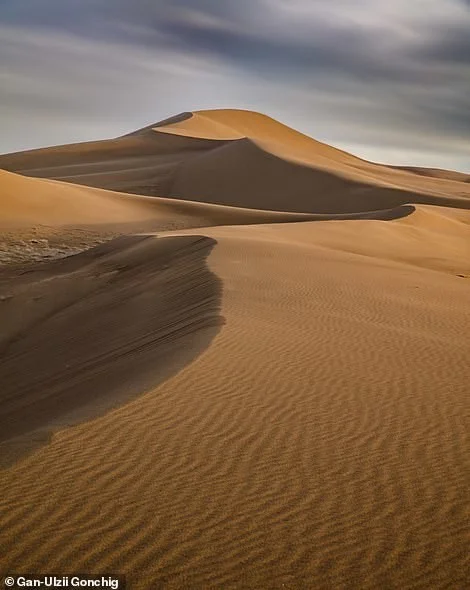
South Gobi
But Mongolia is a land of contrasts. That's why in the Yol Valley in the Gobi Desert, every year until mid-July you can see an icy stream covered in a layer of ice several meters thick.
Fire and ice? Typical Iceland.
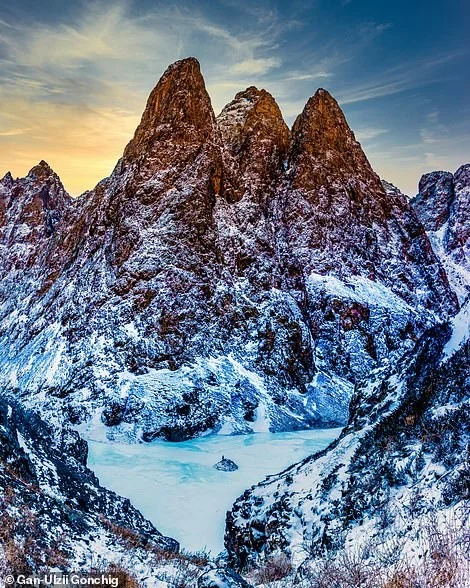
Ice stream in the Yol Valley in the Gobi Desert
Among other photos of Gan-Ulziya, you can see the majestic and snow-covered Altai Mountains - the habitat of snow leopards, lynxes and golden eagles. Nomads have settled in the fields at the foot of the mountains. They live in traditional yurts - round tent-like dwellings.
Photos of Khovd Province show many yurts along a winding river surrounded by green plains.
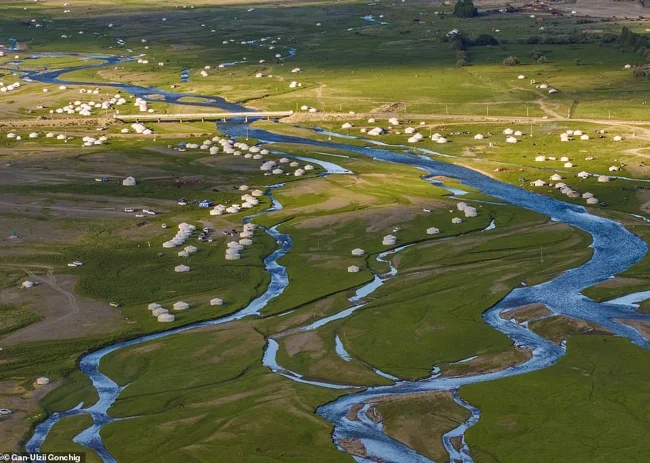
Yurts in Khovd Province
"Many Mongolians still live in traditional yurts and lead a nomadic life, and it's quite impressive," the photographer notes.
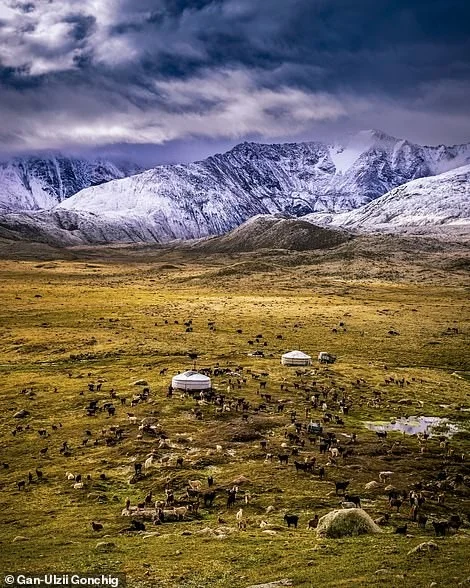
Altai Mountains and Nomad Yurts
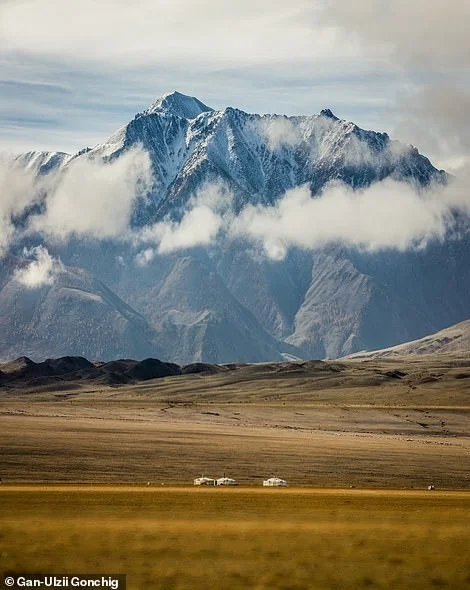
And these amazing multi-tiered roofs, red columns and surrounding walls are the Amarbayasgalant Monastery, which seems to float above the snowy plains.

Amarbayasgalant Monastery
The photographer has many pictures of horses galloping and bucking in the open field, as well as grazing near yurts. According to him, the horses "spend 24 hours a day foraging for food on their own."
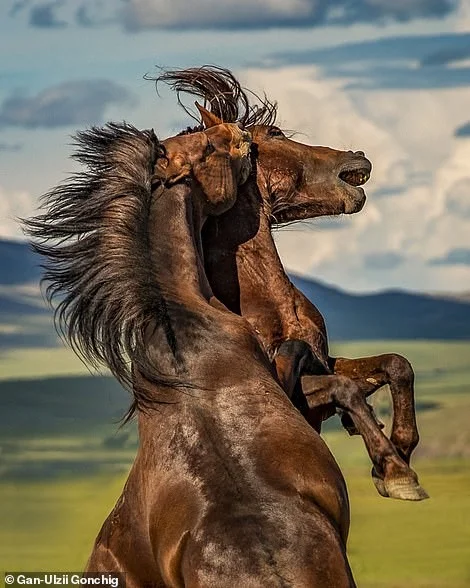
Gan-Ulziy names Lake Khovsgol, the Gobi Desert, and the Orkhon Valley among his favorite places. For those planning a trip to Mongolia, he gives some advice. For example, he talks about what dangers they may encounter and where exactly.

Kerulen River
“I would advise tourists to be careful when visiting remote areas without proper preparation,” he says. “For example, you shouldn’t go into the wilderness without a guide – there is no infrastructure there and the weather is unpredictable. High-altitude areas like the Altai Mountains are extremely cold in winter, so it’s important to be properly prepared. The Gobi Desert can get very hot in summer, which can be challenging for those not used to extreme temperatures. For safety, it’s best to travel with a local guide or join a tour group.”
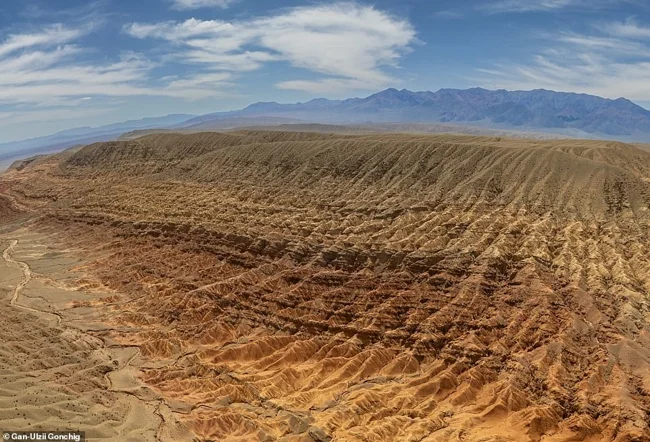
Red cliffs of Ulaan Yavar, Gobi-Altai aimag (Gobi-Altai region)
Gan-Ulzi also talks about how those who have never been there and do not know the accepted social norms should behave in his country.
"There are several important social customs in Mongolia that are worth remembering," he says. "Do not step on the threshold when entering a house or yurt - always step over it. Do not touch anyone's headdress, as this is considered very personal. Never point your feet at people or the family altar in the yurt. Never whistle indoors, it brings bad luck."
If you are offered food or drink, politely accept it, even if it is only a small sip. When passing or receiving something from another person, use both hands, or at least the right hand.
Finally, always show respect to elders by greeting them first and offering them the best seats. Following these customs will help you avoid looking like a black sheep in society."
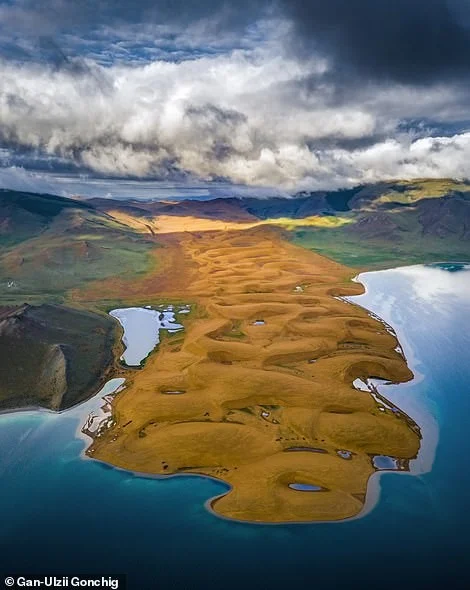
Lake Khar (Black Lake), Western Mongolia
Is there anything that might surprise first-time visitors to Mongolia?
"There are a few things that might surprise visitors to Mongolia," says Gan-Ulziy. "The open spaces are much larger and more desolate than many expect. The extreme weather conditions, with very hot summers and very cold winters, can also be a real shock.
Tourists are likely to be impressed by the friendliness and hospitality of the locals, who are known for their generosity. They are also likely to be impressed by traditional festivals such as Naadam. These festivals feature unique sporting events such as wrestling, horse racing, archery, and the experience can be very different from what you are used to."





